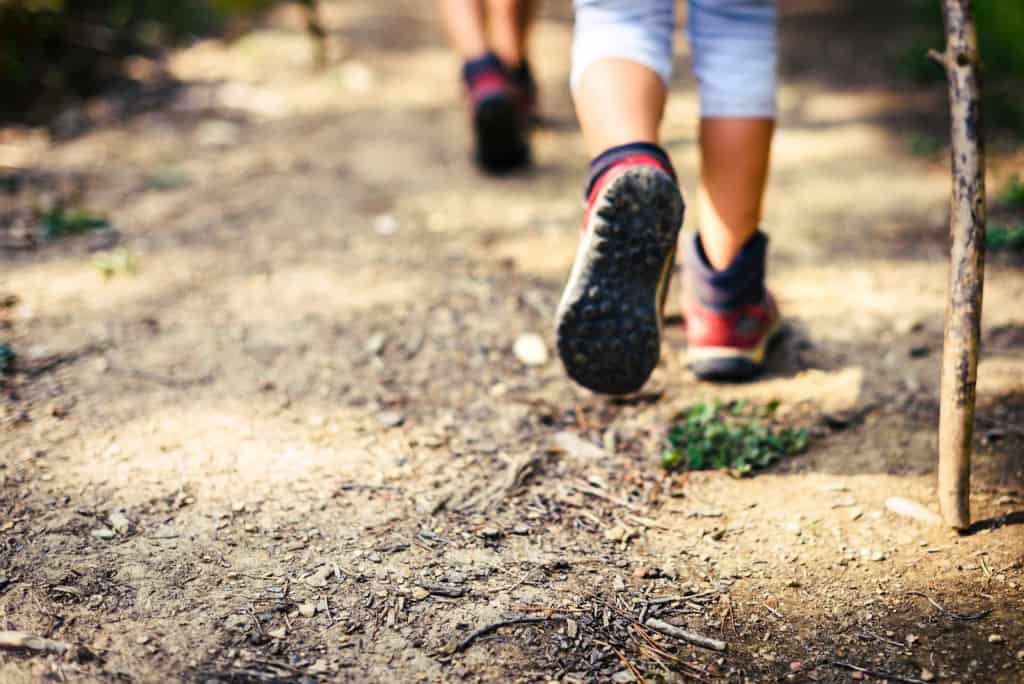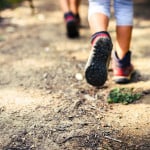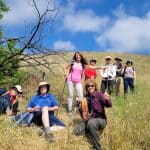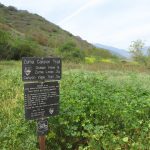This will be our fourth 4th of July event and potluck celebration. It is well away from any traffic jams and other holiday nuisances.
Difficulty: Fit Beginner (https://www.meetup.com/Hiking-Plus/messages/boards/thread/50879781)
Note: The address above is where we will meet.
This hike is will take us part way up the Hummingbird trail to a flat rock that is slightly sloped and ideal for sitting and having a small party.

This is a snack-share (https://www.meetup.com/Hiking-Plus/messages/boards/thread/50879772) event that will include watching the fire works. While we will be kind of far from any fire works, we’ll be able to see them in the distance happening at a variety of locations. A fun time will be had by all.
The surroundings are very interesting and the views are incredible, especially at night. Official start time for the fire works in Simi Valley is 9p. The start time will give us plenty of time to make the climb and share snacks before.

This hike is an out-and-back hike and is a favorite for many hikers. It can get cool and windy on the rock, so I recommend bringing something to put on, just in case. Also, consider bringing some insect repellent.

The hike is 3 miles round trip and about 700′ of gain, but there is still a climb involved and it will definitely get your heart pumping. Feel free to stop several times along the way to take a breather. This is a social event, not a conditioning hike. That means we won’t be doing it at high speed and I’ll be stopping at several points to let people catch up. If you know the way, you are welcome to move ahead on your own.
The route can be hard to follow in a few spots because we hike over sandstone and it’s hard to see any trail. I’ll be marking the direction where needed with baking soda arrows in case the group gets spread out. I’ll also be dropping “comfort dots”, or little plops of baking soda all along the way. This can be very comforting when making the hike back down, just to remind you, you are on the correct path.
On the way up, there are many “steep-cuts” that will shorten the route. I don’t wish to shorten the route or make the climb harder, so I will always take the longer route when there is a choice.
Please bring a flashlight or headlamp for the return descent.
Parking is limited and with sunset restrictions at the entrance to the trail, so the hike will start at the parking lot on the west side of Kuehner Dr. just south of CA-118. To get to the trail start, we’ll head north on Kuehner for a 1/2 mile until the street ends.
Interesting Notes:
Yerba Santa
Saint Herb, Holy Plant, Mountain Balm.
You will see lots of this plant on this hike.
The Spanish who came to early California were so impressed with the plant that they gave it the name Yerba Santa.
Leaves were chewed to relieve dry mouth. Leaves were smoked or chewed to relieve asthma, coughs, colds, headaches, and stomachaches. Infusions of Yerba Santa leaves and flowers were used to treat fevers, coughs, colds, stomachaches, asthma, rheumatism pleurisy, chronic bronchitis, tuberculosis, and to purify the blood. Heated leaves were placed on the forehead to relieve headaches and other aches and sores.
The sticky leaves stay in place upon the skin. Mashed leaves were applied externally to sores, cuts, wounds, insect bites, and aching muscles. Mashed leaves were also used to reduce the swelling and relieve pain caused by bone fractures. The branches and leaves were burned in steam baths to treat rheumatism and hemorrhoids. Contains chemicals that are thought to loosen mucus in the chest and may increase urination.

Scorpions.
Most likely to encounter in the mountains of Southern California: California Common Scorpion (Paruroctonus silvestrii). Up to 4″ tip to tail, most are about 2″.
Other types likely to be encountered are the Burrowing Scorpion (Anuroctonus phaiodactylus), Striped Tail Scorpion (Vaejovis spinigerus) and the Arizona Bark Scorpion, the most dangerous kind in America, which packs a painful sting but still not fatal unless you have an allergic reaction.
Most people aren’t even aware there are scorpions on the trails around Southern California. That’s because they don’t come out until night and if you don’t have a black light, you’d probably never even know they are there. I’ve counted more than 50 during a 1.5 hike down Angel Vista in Newbury park shortly after dark in August, and I have seen them on almost all hikes in the summer. On this same hike a month later when it was cooler, I didn’t see any.
Are they dangerous?
There is no worry walking on the trails with closed toe shoes. They aren’t aggressive. If you push them with a stick, they might run 12-24 inches and stop again. They are so sedentary that they can live for a whole year from eating just one bug. A sting can vary from too small to pierce your skin, to similar to a bad wasp sting.
All scorpions possess a venomous sting (depending on who you ask), although most are not lethal to humans. Reported mortality is due to the venom of about 25 species located in northern Africa, the Middle East, India, Mexico and parts of South America.
The below photo was taken on the Angel Vista hike by Mark T. on Sept. 7, 2016.

Scorpions illuminate under an ultraviolet light (black light). They are easy to spot at night with a black light even 20′ away. A black light flashlight can be bought on eBay for about $1 including shipping.

• Most live in burrows.
• Their burrows usually have oval openings, flat on the bottom but curved on the top, or are made from natural tunnels such as paths under rocks. They can be straight or contain spirals.
• Burrows are typically just 30 cm but can be several meters long. They can contain chambers at the front for turning around. They can have entrances raised above ground level, and even have two or more entrances to the same burrow.
• They spend > 90% of their lives in the burrows.
• They leave their burrows to feed or mate, only on about 1/5 of evenings, and usually for less than 4 hours starting at dusk.
• 2/3 of them can be found within 15-50cm of their burrows.
• It is speculated that scorpions live in burrows to both escape environmental extremes such as hot and cold, and also for protection from predators.
• Most die from by predators: Snakes, rodents, and other scorpions.
• They eat insects and sometimes other scorpions.
• They often survive fires by staying in their burrows.
• Scorpions can deliver a light sting, and then if needed, a subsequent more powerful sting They can regulate the toxin level based on the size of what is being stung.
• Male scorpions may sting their partners to facilitate mating.
• They can live up to 5 years and are sold as pets.
• Pregnancy can be between 6 months and 1.5 years depending on the species.
Directions:
Hummingbird Trail
2325 Kuehner Drive (lot where we will meet)
Simi Valley, CA 93063
34.278074, -118.662378
From the 118:
Exit 30 Kuehner Dr.
South to the first parking lot on the right.
From CA-23:
CA-23 north to CA-118 east.
CA-118 east for 12 miles.
Exit 30 Kuehner Dr.
Right on Kuehner Dr. for 1 block
First parking lot on the right.
The Hike:
Distance: 3 miles, 3.5 hours
Elevation Gain: 700′
Pace: 2.0 mph
Dogs: No. They are allowed, but there will be food, fireworks, and we’ll be sitting for a while.
Restrooms: Yes, at the gas station across the street.
Drinking Fountains: Yes, at the start, but not once we are on the trail.
Parking: Free
Trail: Single track, double track, and rock.
Known Dangers: Rattlesnakes, slip-‘n-fall
What to Bring:
1-2 liters of water.
Snacks and/or beverages to share
Hiking shoes preferred, but athletic shoes will be OK.
Flashlight or headlamp.
Disclaimer / Release of Liability: https://www.meetup.com/Hiking-Plus/pages/29622459/Is_Hiking_Dangerous/






